Kitchen Project #105: Intro to gluten-free baking
Welcome to the new 'Baking Remix' column by Brian Levy!
One of the things I know we all have in common is curiosity. It’s a total joy to explore the world of baking and sharing the findings with you here on the newsletter. But I’m the first to admit that my expertise has limits, and it’s an honour to commission work from writers that we can all learn from.
I’m so excited to introduce you to a brand new column - and columnist - for the newsletter. Welcome to Baking Remix with Brian Levy, a regular column that focuses on alternative baking ft. recipes to accommodate gluten-free and vegan ingredients (not always at the same time!)
Meet Brian!
Last year I had the unbelievable pleasure of meeting the author of a game changing book. I do think its quite rare for a truly untraversed subject to appear. Enter Brian’s stunning debut ‘Good & Sweet’, which was committed to a serious feat: A baking book that had absolutely no added sugar.
Not one spoon of caster sugar, a drip of honey or a squeeze of maple can be found in Brian’s book. I’m still baffled at the mountain he had to climb to produce an entire books worth of cakes and cookies that look like… cakes and cookies. Removing one of the foundational building blocks in baking is akin to having to relearn to walk, or to learn a totally new language. And Brian did it. With aplomb.
I’ve been looking for a writer for a while who could teach us all about alternative ingredients. Seeing how meticulously Brian traversed a world of baking without sugar, I knew that he would be perfect person to take us on a journey to the realm of vegan and gluten-free baking. Learning how to work with non traditional ingredients (ie. without butter or eggs, or wheat flour) will actually give us a deeper understanding of baking as a whole.
So, what is it?
In "Baking Remix," Brian will go down the rabbit hole, guided by his curious spirit and expertise, to provide insights into ingredient swaps, the science behind successful gluten-free baking, and the versatility of vegan alternatives. Whether you're seeking to accommodate dietary restrictions or simply looking to expand your baking horizons, Brian's column will empower you to think outside the box, experiment fearlessly, and achieve exceptional *dietary requirement friendly* results
In his first newsletter, Brian will share his adventures into finding the perfect, all-purpose gluten free pastry. I think this is a great place to start - many tart fillings are gluten free but few tart cases are not. Over on KP+, Brian will be sharing something superbly joyful to fill your tart case with: CUSTARD. And not just any custard, Brian is sharing his recipe for Flan Pâtissier, a beautifully thick baked pastry cream with a burnished top. One of my absolute favourites. Here’s a slice:

What’s KP+? Well, it’s the level up version of this newsletter. By joining KP+, you will support the writing and research that goes into the newsletter and get access to an amazing community, extra content, the full archive, and more. Subscribing is easy and only costs £5 per month. Why not give it a go? Come n join the gang!
Okay, I’ll pass you over to Brian.
Love,
Nicola
HELLO, WORLD! / Welcome to ‘Baking Remix’
by Brian Levy
I love a profound plunge* into nitty-gritty baking issues, so I was thrilled when Nicola asked me to contribute an “alternative baking” column to Kitchen Projects. In conventional baking rooted in European tradition, dairy and eggs abound, wheat flour rules, and sugar flows freely.
I’m a fan of all these ingredients in moderation, and I personally have no allergy or aversion to any of them. But for whatever reason, I’m irresistibly drawn to the idea of finding alternatives to them. This led to the publication of my first cookbook last year, Good & Sweet, for which I developed almost 100 recipes for desserts and other sweet items without a speck of added sugar (no cane or honey or agave or maple), harnessing the intrinsic sweetness of ingredients like fruits, chestnut flour, and even miso paste to do all of the sweetening.
I get a kick out of trying ingredients that are new to me or applying familiar ones in unfamiliar ways. When a breakthrough occurs, it’s a delightful reminder that there are still things to discover and develop and learn in a field that has existed for so long.
Alternative baking is not just about healthfulness or allergens (though it can happily accommodate such things); for me, it’s about discovery, complex flavors and textures, and mindfulness in regard to ingredients. I look forward to sharing with you in the months to come a bit of what I’ve learned and continue to learn about alternatives to our conventional baking practices.
*an alternative but equally alliterative phrase for “deep dive.”
Gluten—heard of it?
Unless you’ve been living in a bubble (the walls of which might be made of highly elastic gliadin and glutenin proteins), you’ve heard of gluten and of the phrase “gluten-free.” Gluten is the combination of the aforementioned types of proteins, and it gives doughs made with wheat, rye, and barley flours their characteristic viscoelasticity[1].
Baking without gluten can feel like trying to build a brick high-rise without mortar (or with pretty crappy mortar); Even if you’ve managed to frame out all of the individual rooms, you know that the whole structure might crumble at any given moment. So why even bother? Well, there are people who can’t digest these proteins due to gluten intolerance or celiac disease, but for experimental bakers like me (and many of you KP readers, surely) the appeal of gluten-free baking is the door it opens rather than the one it closes; there is a world of flours beyond wheat that is delicious to explore.
The lab-coat (as opposed to kitchen-apron) aspect of gluten-free baking is in figuring out how to achieve certain things we do love about gluten without its presence. The wheat grain, milled to the powder we call flour, is composed of 70% starches, 7-15% proteins (most of which are gluten[3], 13% water, and up to 2% lipids[4]
For me, the door to that world was cracked wide open by Alice Medrich’s 2014 cookbook Flavor Flours, for which she (with Maya Klein) developed recipes for all kinds of baked goods that celebrated individual “hero flours” for their unique flavors and textures. Medrich told me in a recent interview that “the idea of using these flours for their flavor and texture…as ingredients themselves, not as stand-ins [for wheat flour], became…the mantra.”
Here’s where I’ll mention that I used this column as an excuse to interview a few of my favorite cookbook authors who happen to be experts in gluten-free baking: in addition to Medrich, there’s Aran Goyoaga (whom you might know as Cannelle et Vanille), and Liz Prueitt (co-founder of the famed San Francisco bakery Tartine). This trio has a vast collective knowledge about gluten-free baking, not to mention innumerable award nominations and wins.[5]
GF Baking: Start With A Tart?
While gluten flaunts its abilities most shamelessly in a loaf of bread inflated with a network of fixed air bubbles, these proteins play subtler roles in other baked goods. Honestly, when Nicola suggested that a perfect, versatile tart crust would be a good place to start our exploration of gluten-free baking and of “alternative” baking in general, my first thought was that a tart crust doesn’t—shouldn’t—showcase gluten enough for it to be the focus of a piece about gluten-free baking. Shouldn’t we start with brioche?
But the more it marinated, it began to seem a good way of easing into the shallow end of the gluten-free pool (the deep end being that airy, chewy bread) and of highlighting the quieter contributions gluten makes to the typical wheat-flour recipe. The more obvious contribution is helping to hold a mass of dough together, making it possible to roll it out to a thin round without it crumbling to pieces. But what I hadn’t realized until Goyoaga pointed it out is that gluten also plays an important role in achieving flakiness and “snap,” as it allows for unbroken layers of dough to be stretched to extreme thinness between layers of butter. The butterfat seals each layer of dough while the butter’s water creates steam during baking that produces wide, shallow pockets of air between the layers, enhancing their discreteness and thus creating the phenomenon we call flakiness.
TESTS AND RESULTS
I Tried A Hot Water Crust.
I recently had a winterlong popup bakery at which I served what I called a “Catalan vegetable tart.” Its crust was rich in olive oil and eggs, and it was gluten-free, made with my favorite homemade gluten-free flour blend consisting of flours of white rice, millet, oat, and brown rice (I developed this blend over the course of years for my book, Good & Sweet). I loved the flavor of this crust, but because rice is a hard grain and the rice flours that are widely available, at least in the U.S., are not very finely ground, they tend to produce a slightly gritty texture in recipes that, like tart crust, don’t have a high water content. While I didn’t mind a bit of coarseness in my rustic vegetable tart, it simply wouldn’t do for our “perfect” all-purpose gluten-free KP tart crust.
As we know, rice cooked in water isn’t gritty, so my first thought was: cook the rice! I made a hot water crust using the same combination of flours detailed above, but something about the way these flours absorb (or resist) water keeps the melted butter and hot water from emulsifying, and I ended up with a broken dough that had to be pressed into my tart pan; there was no way I was going to be able to roll it out and lay it in. I baked it nevertheless and the result was suspiciously glossy on the bottom (from leaked butter, I assume), dense and fairly chewy, and an undeniable failure.
I Tried A Cream Cheese Crust.
I turned next to my beloved rugelach dough for inspiration. While butter takes care of the flakiness, the not-so-secret to tender and flavorful rugelach pastry is cream cheese. In addition to cultured milk and cream, Philadelphia cream cheese and the like contain carob bean gum for binding and thickening. The gum in turn lends its powers, especially useful in the absence of gluten, to a dough into which cream cheese is incorporated. Medrich and Prueitt both have wonderful rugelach recipes that inspired them to adapt cream cheese doughs into gluten-free tart crusts.
I referred to several rugelach recipes, including my own from Good & Sweet, and synthesized them to test as a tart crust. I also revisited my selection of flours. I tasted raw wheat flour (not something you are supposed to do, because it could potentially contain bacteria like E. colli and Salmonella) and was reminded how soft it is; it melts on your tongue. I tasted the many gluten-free flours I had on hand, and all types of rice flours were the opposite of melt-on-your-tongue; they were hard and gritty. The flours that were most similar in texture to wheat were oat and finely ground corn. Oat and corn flours combine for a subtly sweet and earthy aroma and flavor.
(An important note about nomenclature: what we call “cornstarch” in the US is known as “cornflour” in the UK. In the US, “cornflour” refers to cornmeal (polenta) that has been ground fine. A very important distinction.) The blend has character but one that is versatile enough to serve in an “all-purpose” tart dough recipe. I added to these flours some tapioca and potato starches to make up for the relatively low starch content of corn and oats as compared to wheat. Starches swell as they absorb liquid and help to hold a dough together, and they bring to the final baked product crunch, snap, tenderness, and browning.
AN ASIDE: WHY TWO STARCHES?
Why two types of starches? It can help to picture their sources when imagining what various starches will contribute to a recipe. Tapioca, from the cassava plant’s roots, has a characteristic gumminess that we recognize in boba or tapioca pearls, but Goyoaga explains that in a tart crust it lends a “crispiness and chewiness.” Potato starch, on the other hand, produces a “drier, fluffier,” softer texture reminiscent of its source tuber. For recipe developers as well as recipe followers, the shorter the ingredients list, the better, but sometimes you just can’t bring yourself to eliminate an ingredient and sacrifice that little edge in quality. Medrich tells me that she recognizes that gluten-free recipes can have “just too goddamn many ingredients,” and in an effort to change that, she tested a muffin recipe two ways: first, using two starches, and second, using only one. She could taste the difference but thought perhaps she was being too critical. But when she let two unwitting colleagues taste the muffins, they also perceived the difference and preferred the muffin with two starches.
Back to the cream cheese crust. Though it was a much better texture than the hot water dough, I still had to press it into the pan (i.e. it wasn’t rollable). It baked nicely (I filled it with asparagus and a cheesy custard) and had a lovely flavor and zero grit, but it didn’t have the flakiness and snap, nor the water resistance, that I wanted in an all-purpose tart crust.
Success: A Sturdy, Buttery Dough.
Now that I’d settled on a flour (meal) + starch blend that I was very happy with, I decided to bring it along to the next stage of my quest for a flaky, “perfect” crust. Starting with inspiration from traditional-style pie and tart crusts of the “3:2:1” ilk by Prueitt, Claudia Fleming, and Nick Malgieri among others, I swapped milk in for water and enriched it with an egg yolk and a dash of sugar. These additions would help to hold the dough together as much as they’d eventually help with browning and rich flavor.
The dough rolled out beautifully between two sheets of parchment, and I was cautiously hopeful that I had found the one. I filled the unbaked shell with a rich vanilla custard, with the logic that if a crust could stand up to this wet filling, then it could handle anything. The resulting flan pâtissier was, dare I say, spectacular. I even served its third iteration at a local restaurant (I was more than satisfied with the “oohs” and “ahhs” with which it was received) because I’d eaten quite enough of it over the course of a couple weeks.
Don’t let the dash of sugar (which serves as a seasoning and browning agent here) fool you; this dough can be used as a crust for all kinds of tarts, sweet or savory. And let’s embrace that its slightly craggy surface reflects what makes it different from the typical wheat-flour crust!
Without further ado, here’s the recipe for my gluten-free pastry.
Ultimate Gluten-free pastry
For the dough:
45 g (6 Tbsp + 1 tsp) Tapioca starch (aka tapioca flour)
45 g (4 ½ Tbsp) Potato starch (not potato flour)
45 g (⅓ cup) Yellow cornmeal, fine (UK) / Yellow corn flour, fine (US)
140 g (1 ½ cups) Oat flour
¾ tsp Salt
¾ tsp Sugar
195 g (13 ½ Tbsp) Unsalted butter
105 g (scant ½ cup) Whole milk
1 Egg yolk
Make the dough:
In a food processor*, pulse the starches, flours, salt, and sugar to mix. Distribute the butter over the flour, then pulse to coat the butter with flour and to break it up into pieces no larger than peas.
In a spouted cup, lightly whisk together the milk and egg yolk. While pulsing the machine, stream the egg-milk mixture into the dough. Do not overmix!
Transfer the loose dough to a large sheet of parchment and compact it into a ball with your hands. Flatten it slightly to form a disk, then wrap it tightly, put it in an airtight container, and refrigerate it for a least 1 hour (and up to 2 days) before rolling it out.
Tart dough can be wrapped well frozen for 2 weeks
Notes: The tart dough can be made in a food processor or by hand in a large bowl. If you’re making it by hand, follow the same sequence as with the food processor instructions, but use your finger tips to combine the butter with the flour and use a rubber spatula or wooden spoon to mix in the liquid ingredients.
Want to turn this into Flan Pâtissier? Get the lowdown on KP+ now
References
[1] Kim, Kyung-Hee, and Jae-Yoon Kim. “Understanding Wheat Starch Metabolism in Properties, Environmental Stress Condition, and Molecular Approaches for Value-Added Utilization.” Plants (Basel, Switzerland) vol. 10,11 2282. 25 Oct. 2021, doi:10.3390/plants10112282. Gluten-free grains–corn, sorghum, and millet, for example– also consist of starches, proteins (non-gluten, of course), water, and lipids, but in proportions that differ from those of wheat. So we mix and match–along with pure starches from corn, potato, or cassava; with binders like xanthan gum and psyllium husk powder–often in search of a consistency and structure similar to the results offered by the exemplar flour, i.e wheat.
[2] Shewry, Peter R., et al. “The Structure and Properties of Gluten: An Elastic Protein from Wheat Grain.” Philosophical Transactions: Biological Sciences, vol. 357, no. 1418, 2002, pp. 133–42. JSTOR, http://www.jstor.org/stable/3066846. Accessed 26 May 2023..It’s a uniquely powerful and satisfying compound that’s been treasured by humans for thousands of years.
[3] Arranz-Otaegui, Amaia, et al. “Archaeobotanical Evidence Reveals the Origins of Bread 14,400 Years Ago in Northeastern Jordan.” Proceedings of the National Academy of Sciences of the United States of America, vol. 115, no. 31, 2018, pp. 7925–30. JSTOR, https://www.jstor.org/stable/26529356. Accessed 26 May 2023.
[4] https://www.sciencedirect.com/topics/agricultural-and-biological-sciences/wheat-gluten#:~:text=Gliadins%20and%20glutenins%20represent%2075,MacRitchie%20and%20Lafiandra%2C%201997).),
[5] Kim, Kyung-Hee, and Jae-Yoon Kim. “Understanding Wheat Starch Metabolism in Properties, Environmental Stress Condition, and Molecular Approaches for Value-Added Utilization.” Plants (Basel, Switzerland) vol. 10,11 2282. 25 Oct. 2021, doi:10.3390/plants10112282
[5] Goyoaga’s most recent book is Cannelle et Vanille BAKES SIMPLE. Prueitt’s is TARTINE: A Classic Revisited.
[6] https://www.cdc.gov/foodsafety/communication/no-raw-dough.html#:~:text=Flour%20doesn't%20look%20like,flour%20while%20it's%20being%20made.
[7] 3 parts flour : 2 parts butter : 1 part water is a traditional formula.






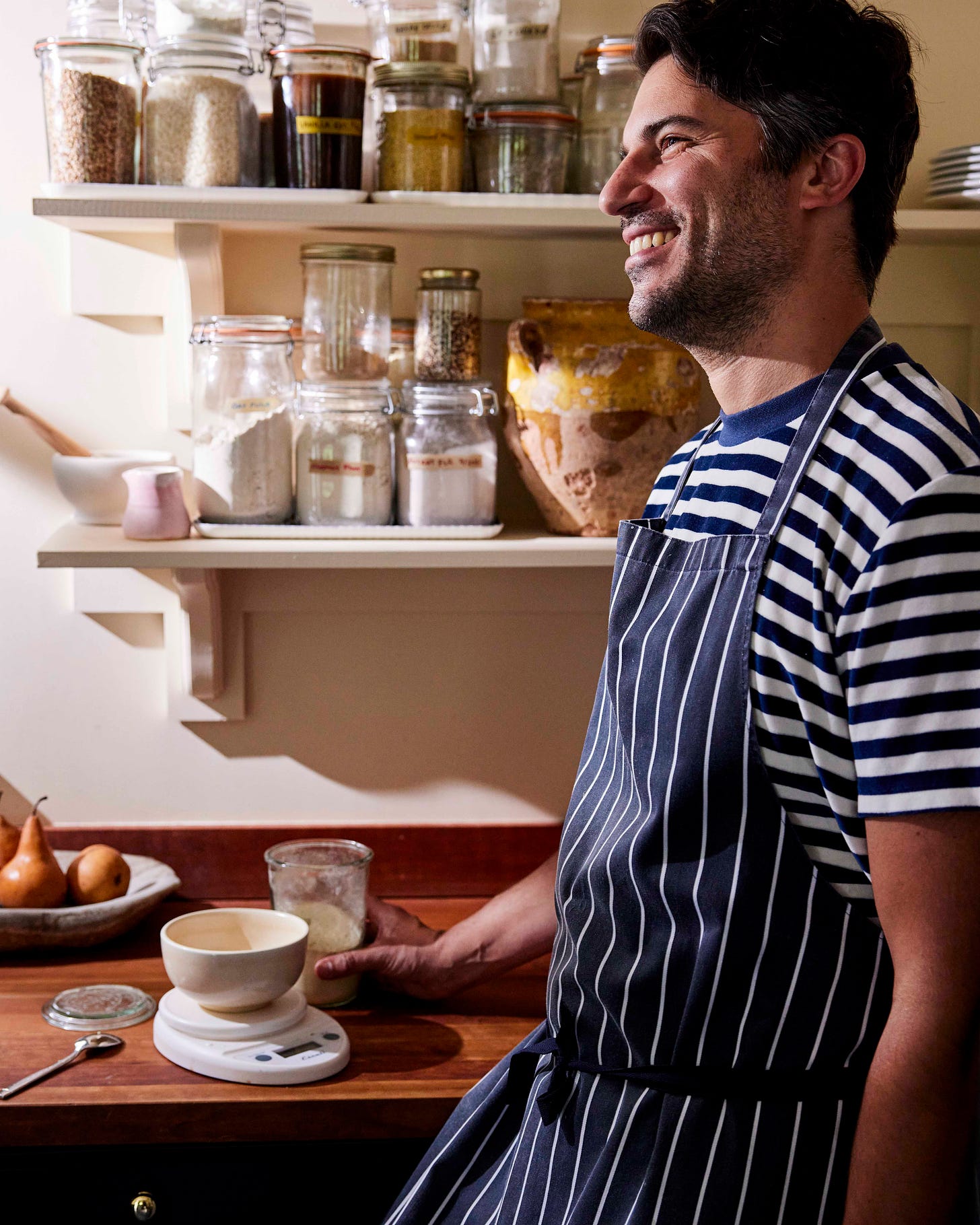
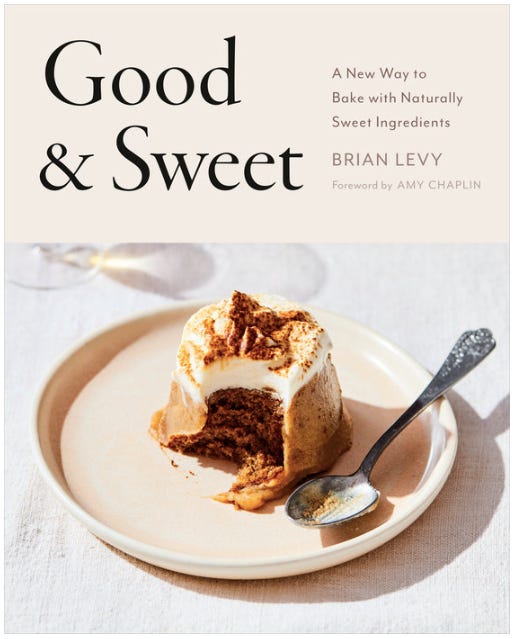

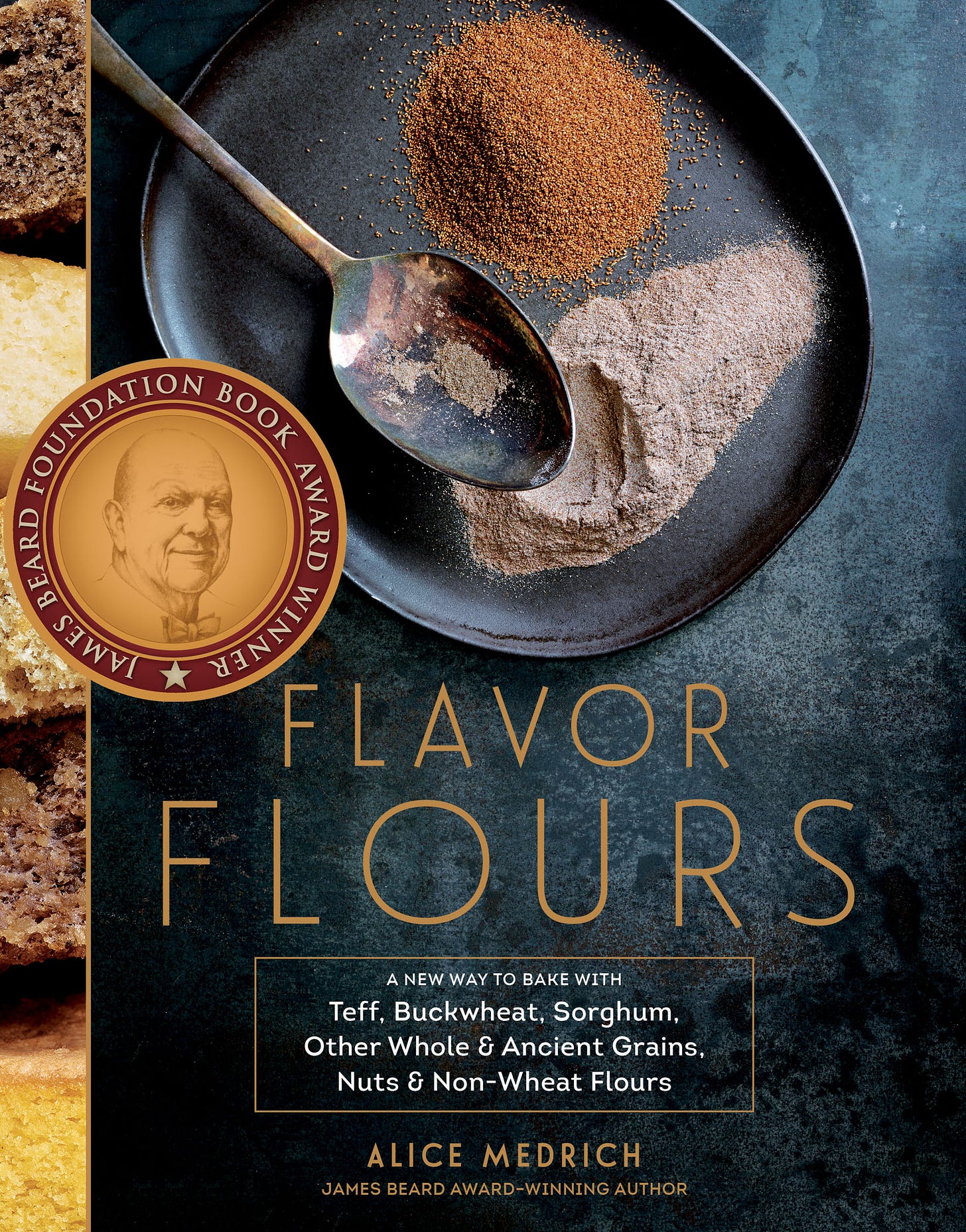
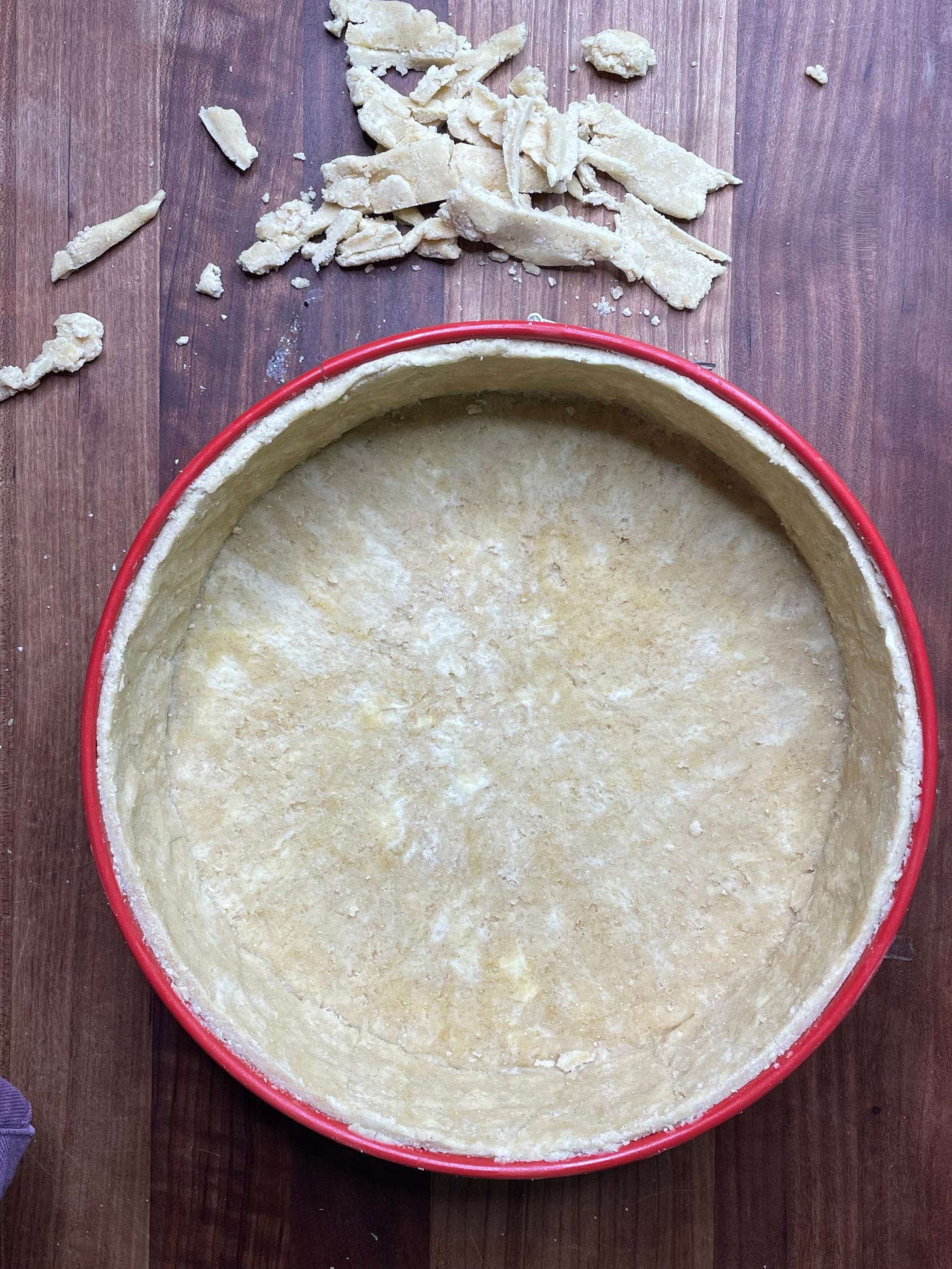
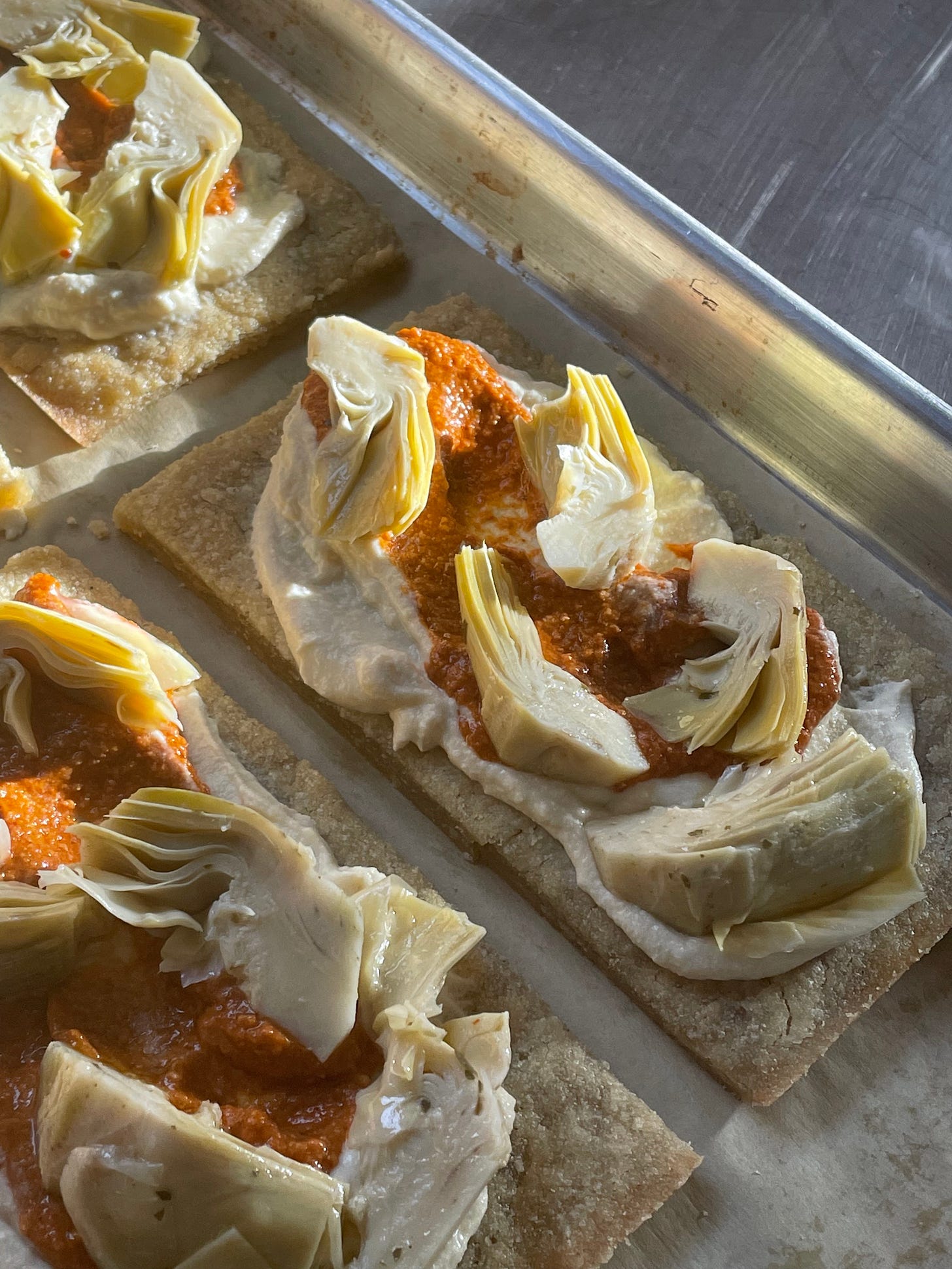
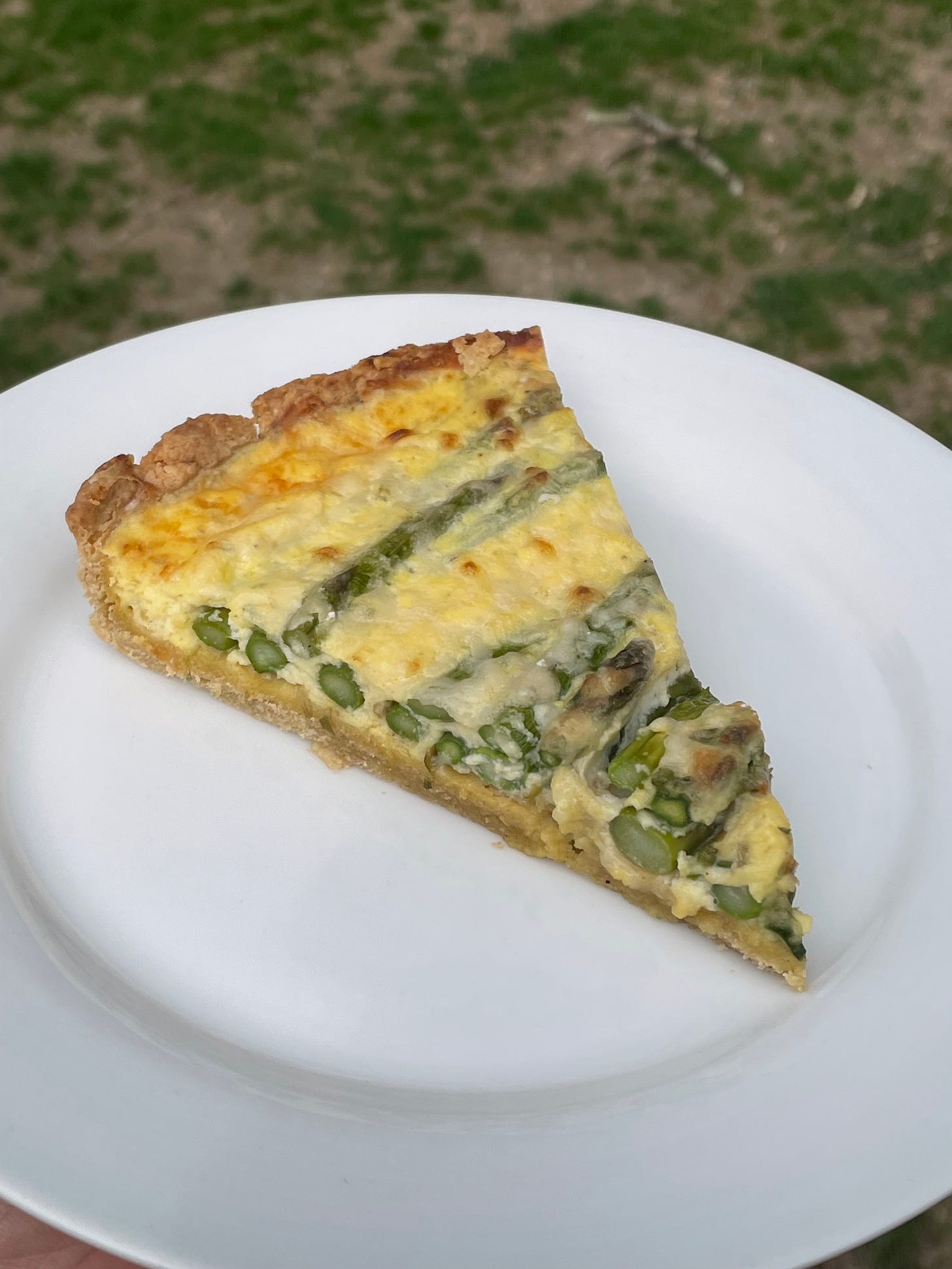
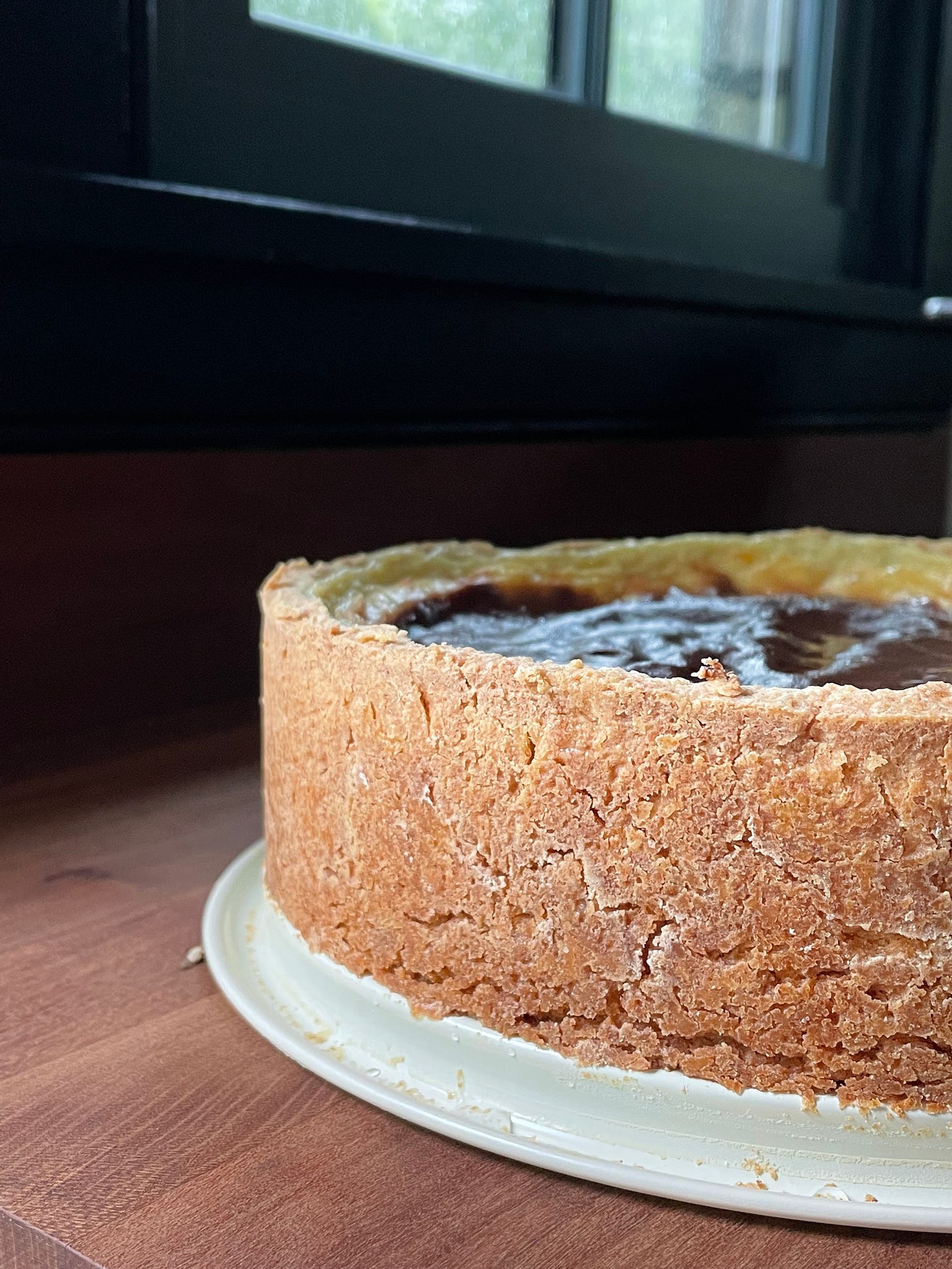

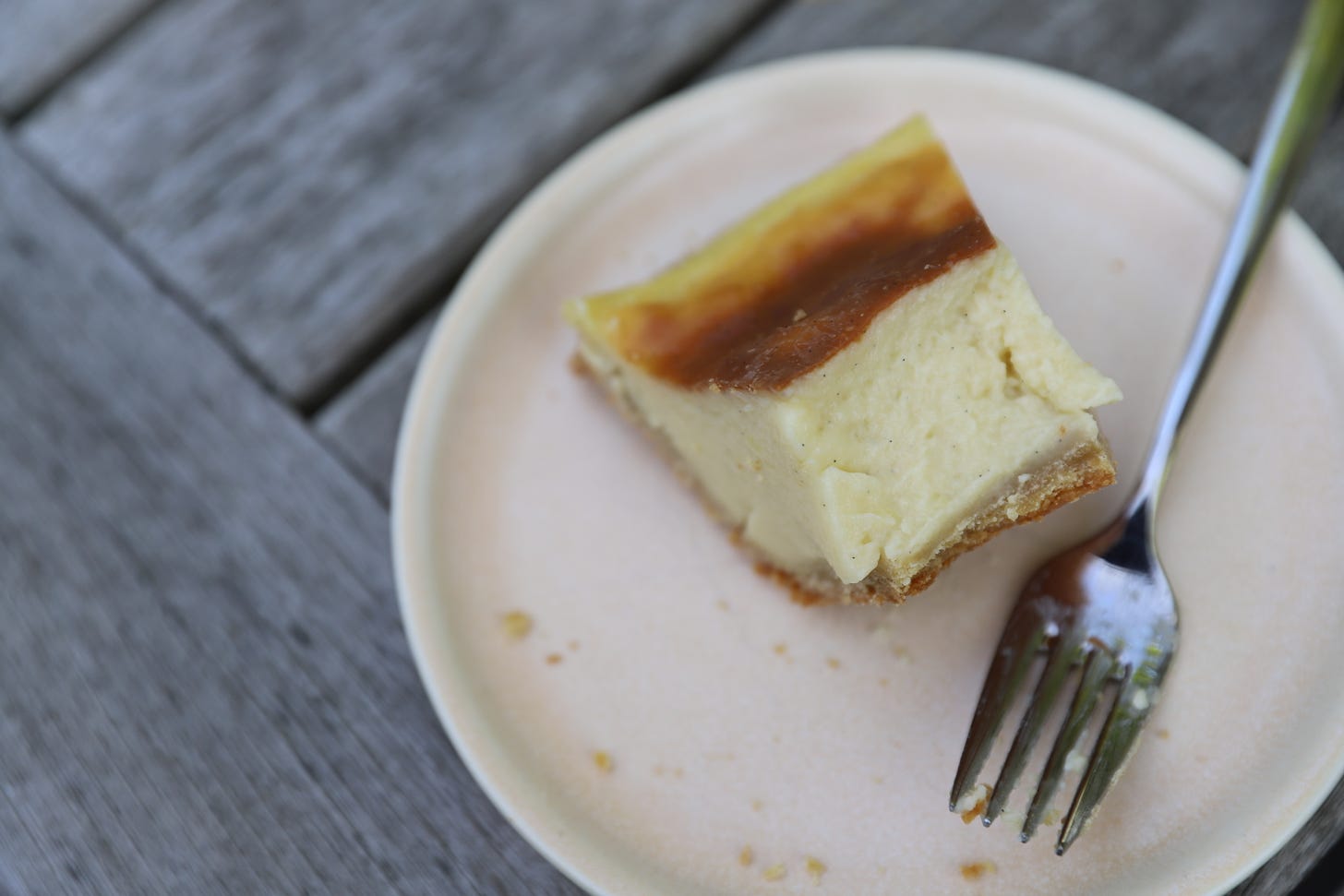

Thank you so much for this! Looking forward to trying this out in a flan of my own.
Nicola's pâte sucrée recipe has become my go-to, and I'm still trying to figure out a good gluten-free version of that as well!
This is a very exciting and helpful post! I have celiac and have been following the work of Medrich, Goyoaga and Prueitt for years. Such geniuses! I recently made the pie crust from Canelle et Vanille Bakes Simple and really like it-- but I'm so curious about your recipe! Love how you went into detail about process. I have also tried cream cheese dough and found it tore very easily.